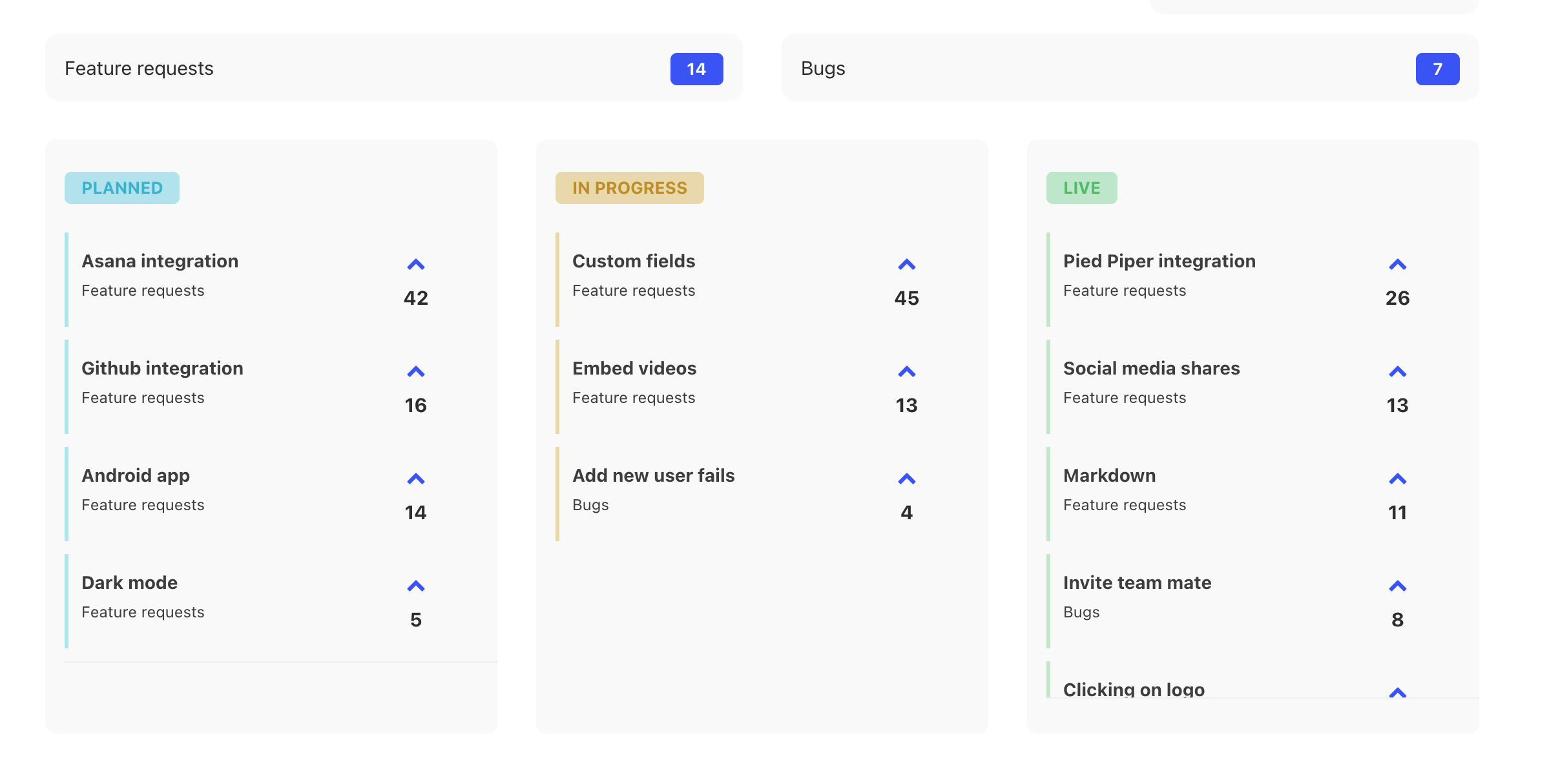5 things you can do to Simplify User Feedback
Product development is an ongoing iterative process where you need to constantly modify your product to meet your customers’ expectations. Having a customer-centric approach for your business means putting your customers at the heart of your business. This is where user feedback comes in.User feedback helps bridge the gap between product development and your customers’ needs to ensure that you build a product your customers truly care about and suits their needs.User feedback often reflects on the factors you might not have considered earlier. Integrating it into your product development can result in a domino effect that ranges from better customer experience to higher sales.Happy customers mean increased brand loyalty, customer retention, acquisition, sales, and revenue.
1. Collecting Feedback the Right Way
This may sound obvious, but it’s important that you declutter your way through different methods of user feedback and find the one that’s most effective and efficient for you. Collecting user feedback can be time-consuming and annoying for customers if not done the right way. A good example would be a simple in-app survey that would work best for a group of people who are new to your application. On the other hand, for customers who use your product extensively and are active members, you can add a bit of personalization, set up a one-on-one call via email, and collect elaborated feedback.Another way to approach user feedback collection is to take into account your product development stage.During the early stages of a product lifecycle, it might be good to create a focus group of key potential users and specifically work with them on a number of tasks. On the other hand, if you’re optimizing your product, you need to widen your net, tap into a larger audience group, and get feedback.A couple of questions you can ask your users are:
A good example would be a simple in-app survey that would work best for a group of people who are new to your application. On the other hand, for customers who use your product extensively and are active members, you can add a bit of personalization, set up a one-on-one call via email, and collect elaborated feedback.Another way to approach user feedback collection is to take into account your product development stage.During the early stages of a product lifecycle, it might be good to create a focus group of key potential users and specifically work with them on a number of tasks. On the other hand, if you’re optimizing your product, you need to widen your net, tap into a larger audience group, and get feedback.A couple of questions you can ask your users are:
- How is our product delivering value to you?
- Do you find our product easy to use?
- Are you able to accomplish your goal with our product?
- How do you like the X new feature?
- Are you looking for any specific features in the next product update?
The bottom line is you need to take a proactive approach towards user feedback and reach out to your customers. You can use surveys, polls, questionnaires, usability tests, user activity, direct communication, and other types of methods to collect useful information.Determine the frequency at which you request user feedback. You need to find the sweet balance of regularly taking feedback from your customers without overwhelming them with constant pop-ups or emails.
2. Analyzing Data
When it comes to user feedback, not all of it will be useful to your business. For instance, feedback from a customer who actively uses your product and has seen the development of your platform may have more in-depth and insightful feedback as compared to a customer who is pointing out an issue you already knew about.Analyzing valuable user feedback points out aspects of your product that need improvement. Firstly, you need to identify how you want to segment your user feedback.Group your customer feedback into predefined categories. Depending on your business goals, you can categorize your user feedback based on user activity, subscription plans, major/minor updates, and other relevant metrics.Feedback is independent data points, so you’ll also need to add context to your user feedback to make better sense of what will best suit your customers. A good starting point is to use sentimental analysis to analyze whether data is positive, negative, or neutral.For example, maybe you want to gauge product sentiment on social media, so you can learn what makes customers happy or frustrated and respond as soon as possible.Establishing a consistent and efficient structure that helps you segment and organize your user feedback will give you an overview of how your customers view your business or services. It will also highlight the features that affect a particular segment of your user base, and how satisfied (or not) they are with your product.
3. Streamline Your User Feedback Journey
To put things in perspective, you need to streamline the entire user feedback journey i.e collection to implementation, or else you run the risk that your team will likely confuse and have a hard time developing efficient product improvements. This means precious development time and resources being wasted.User feedback tools like Upvoty enable you to gather qualitative feedback from your customers/users for specific products, services, or website experiences with an intuitive interface. The platform helps you validate your process and streamline it better for multiple people to work on it.Our platform allows you to create product roadmaps, manage feedback boards, and even customize the way your feedback portal looks and feels.
4. Track and Prioritize Feedback
Once you’ve collected and segmented all your user feedback in a tool, you’re halfway there already. Now, you want to figure out how to cut through that massive list into a short, actionable list of tasks your team can act on. Tip: Use software such as Upvoty to track and prioritize with the help of your users.Here are a couple of ways you can use to rank your requests:
Tip: Use software such as Upvoty to track and prioritize with the help of your users.Here are a couple of ways you can use to rank your requests:
- Consider your business goals. Let’s say you’re trying to acquire more paying customers, so you might want to prioritize requests from free trial users and those that are deeper in your sales funnel.
- Rank your stack of features from your most valuable customers the highest. Use a value metric like ICP, MRR, product plan level, or some other value that lets you increase retention for your most valuable users.
- Segment by life cycle stage. This includes customers at different life cycle stages of your business: free trial users, paying customers, churned users, and others.
These are some of the most common and highly used metrics, but you don’t need to stop there. You can create your own metrics depending on your industry, audience needs, and so on.Remember, a good strategy not only aims to satisfy customers, but also focuses on reducing the customer conversion time, driving down support costs, and making it easier to sell your product.
5. Make your customers feel heard
When you give your customers exactly what they want and they make the best use of it, that’s the biggest win for any business. This means letting your users know you’ve added just the right features they’re looking for and appreciate them for their feedback, both positive and negative.It’s important to close the loop with customers who complete your user feedback survey to assure them you’ve taken their requests into account. Make sure your support team asks follow-up questions to customers who complete your survey.You can send personalized emails, publish posts in your community group, or simply create a report highlighting the most valuable feedback your customers sent and the ones you’ve implemented. This will help you build trust and foster relationships with your users that will go a long way.Collect > Segment > Analyze > Prioritize > Act > Follow upWhen your customers know their suggestions and opinions matter and have the strength to bring a change in a business, they’ll be more than happy to leave positive online reviews, do word-of-mouth marketing, and open different avenues for your brand.
Wrap up
Simplifying user feedback is all about building an effective mechanism that entices users to provide feedback and enables your team to act on them efficiently. Remember, user feedback plays a pivotal role in any successful software product, and so the earlier you start implementing these strategies, the better you can cater to your customers.If you’re not sure where to start, talk to your marketing and customer support team. These departments interact with customers regularly and have a good idea of users who are happy and those who request product updates.

